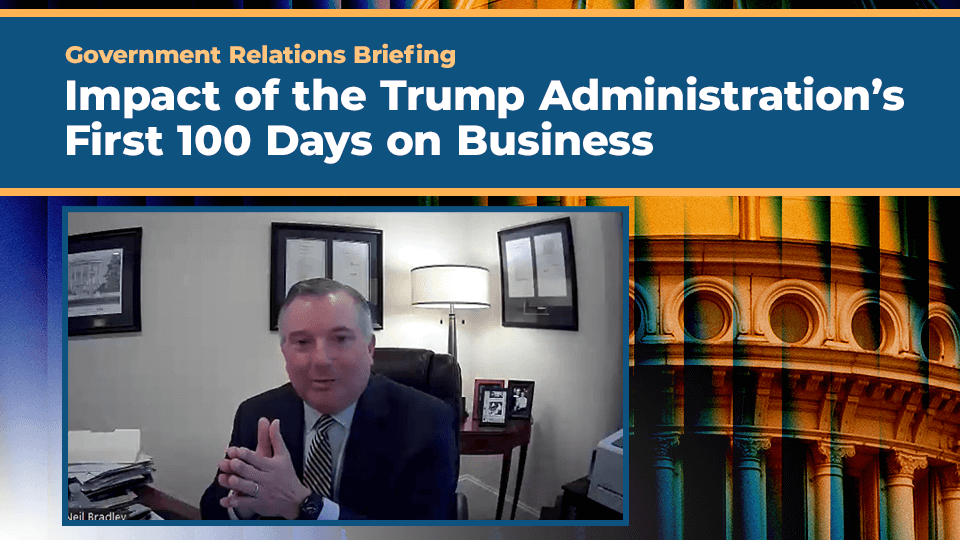With the dust still settling from President Trump’s tariff announcement yesterday, Neil Bradley, senior vice president and chief policy officer at the U.S. Chamber of Commerce, provided N.J. Chamber of Commerce members with an exclusive briefing this morning on the new tariffs and other economic policies coming out of Washington.
“I’m not going to sugarcoat it,” Bradley said. “The tariffs are more aggressive than I anticipated – and more aggressive than the markets anticipated.”
The tariffs, which apply to goods imported from nearly every country, range from 10% to 49%. The rates vary based on the United States' trade deficit with each nation, according to the Trump administration.
President Trump’s goal is to boost U.S. manufacturing and reduce reliance on foreign goods, but the approach comes with costs, Bradley said. The success of the policy depends on how it's measured. “Do we focus on manufacturing output or jobs?” he asked. “If the goal is employment, it will likely lead to higher prices for manufactured goods.” Further, he added, “We have to recognize that we’ll never produce everything domestically.”
Some of the tariffs caught businesses off guard, including those on coffee – a product the U.S. does not produce. “That’s just a tax on coffee,” Bradley said. “Since we’ll never meet domestic demand with domestic production, a tariff on coffee is simply a price increase.”
Certain industries, including lumber, pharmaceuticals, semiconductors, and copper, have been granted tariff carveouts, Bradley said. “The administration has announced plans to implement product-specific tariffs for these sectors,” he added.
Meanwhile, previously announced tariffs are now taking effect, including a 25% tariff on automobiles and car parts. “This will likely cause supply chain disruptions similar to what we experienced during COVID,” Bradley warned.There is good news on tax and regulatory policy, he noted. The Senate appears poised to extend and make permanent federal business tax cuts set to soon expire. Additionally, regulatory policies are becoming more predictable, and new energy policies could help lower prices over time.
“In Washington,” Bradley concluded, “the news is never all good or all bad – it’s always a mix, and today is no different.”
